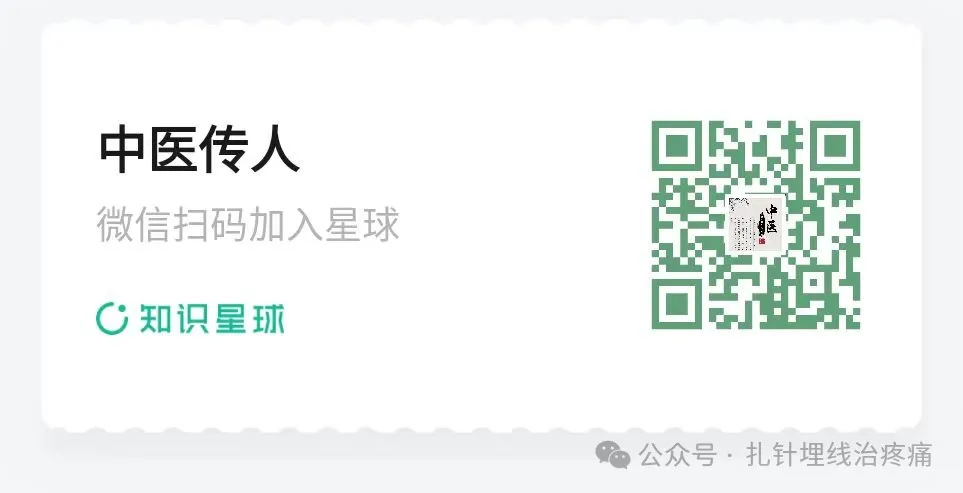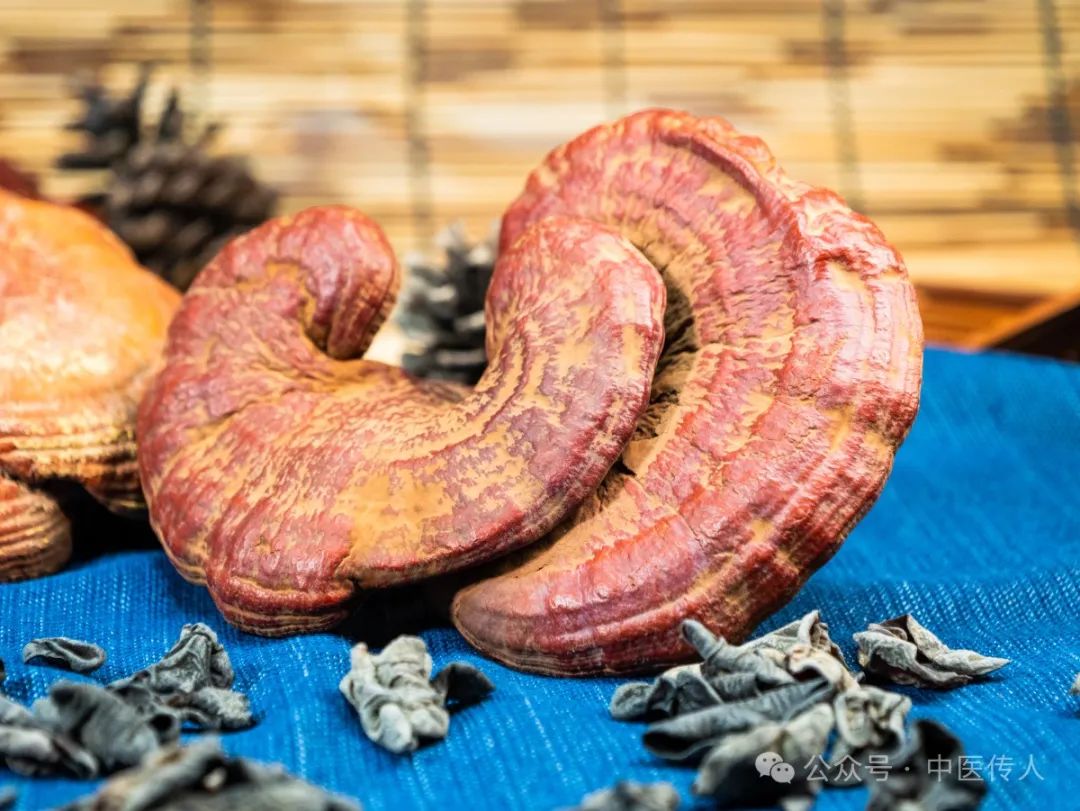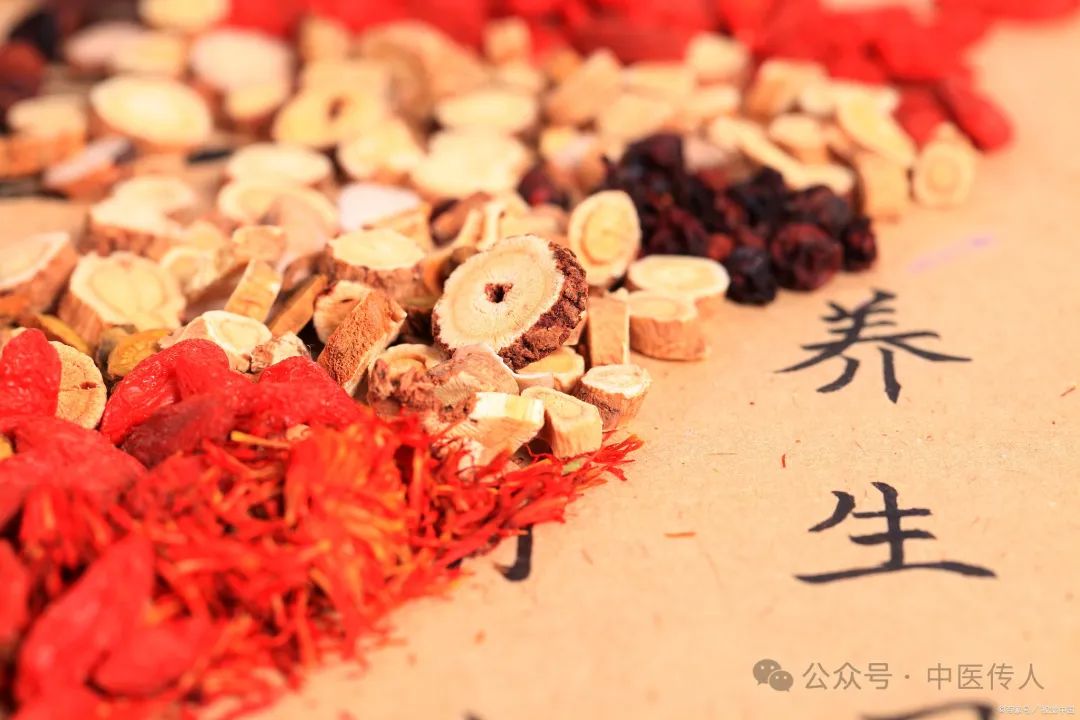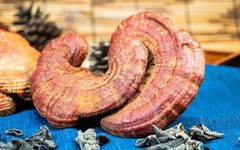In the profound wisdom of Traditional Chinese Medicine (TCM), the path to treatment is not merely about addressing symptoms, but requires a meticulous analysis of the yin-yang, cold-heat, deficiency-excess of the condition. These fundamental elements are akin to the yin-yang and five elements of the universe, mutually restraining and depending on each other, together forming a complex and subtle life system. This article starts from these foundations, summarizing the most basic clinical treatment guidelines, aiming to guide practitioners in grasping the essence of treatment. First, we must discern the yin-yang attributes of the condition. Yin diseases require yang treatment, while yang diseases require yin adjustment; this is a fundamental principle of TCM treatment. Just as winter gives way to spring, the harmony and balance of life can only be maintained through the interplay of yin and yang. Secondly, the cold-heat and deficiency-excess are also crucial factors in treatment. Cold should be warmed, heat should be cooled, deficiency should be tonified, and excess should be drained; these are the basic principles of TCM treatment, akin to the changing of the seasons, where cold-heat and deficiency-excess must be adjusted at all times. Furthermore, the organs, meridians, qi, and blood are interconnected, much like the intricate networks of the human body. During treatment, one must consider the deficiency-excess of the organs, the blockage or smoothness of the meridians, the surplus or deficiency of qi and blood, and the internal-external dynamics to accurately administer treatment and achieve the desired therapeutic effect. Finally, treatment must also emphasize the urgency of addressing symptoms versus root causes. Treating symptoms first and then addressing the root, or treating urgent issues before chronic ones, is a fundamental strategy in TCM treatment. Just as in governance, one must first resolve immediate crises before planning long-term solutions. In summary, this article outlines the most basic clinical treatment guidelines from multiple aspects such as yin-yang, cold-heat, deficiency-excess, organs, meridians, qi, and blood, aiming to provide beneficial guidance for clinical practice in TCM.
For more professional materials and courses, please long press the image below to scan the QR code and join us ↓

(1) Yin-Yang: Yin-yang is the overarching principle of treating diseases.
In the profound theories of TCM, the notion that “yang is often in excess while yin is often insufficient” serves as a guiding light for practitioners. This perspective not only emphasizes the importance of nourishing yin and replenishing essence but also serves as a profound critique of the misuse of warming and tonifying methods. For those with yang deficiency, tonifying yang should not be pursued blindly; rather, it is necessary to “nourish yang while preventing excessive qi”—much like using fire to brew tea, where the heat must be just right, or else it may lead to adverse effects. Therefore, practitioners can only use sweet and warm medicinals, as mentioned in the “Shennong Bencao Jing” (Classic of Herbal Medicine), skillfully adjusting to find the balance between yin and yang. When faced with pathogenic factors, practitioners must discern yin and yang and guide treatment accordingly. If the pathogen is in yang, treat yang to disperse its heat; if the pathogen is in yin, treat yin to drive away its cold. Just as managing a flood requires a combination of drainage and blockage, ensuring that the yin and yang energies flow without interference. For example, in cases of cold damage or epidemic diseases, if the pathogen is in the exterior (yang), one should use methods for the three yang to disperse the pathogen outward; if it is in the interior (yin), one should use methods for the three yin to drive the pathogen inward. If a yang pathogen is mistakenly treated with yin methods, it is like inviting a wolf into the house, exacerbating the condition; conversely, if a yin pathogen is mistakenly treated with yang methods, it is like adding frost to snow, further damaging the body’s vital energy. In the “Shennong Bencao Jing: Continuation of the Preface”, the distinctions of yin deficiency, yang deficiency, yin excess, yang excess, yin collapse, yang collapse, and exterior deficiency versus interior deficiency are highlighted, demonstrating the practitioner’s profound understanding and emphasis on yin and yang. This meticulous differentiation of yin and yang not only reflects the precision of TCM diagnosis and treatment but also showcases the practitioner’s reverence and exploration of the mysteries of life.
(2) Cold-Heat: Cold and heat are one of the attributes of diseases.
In TCM treatment principles, the management of cold syndromes is particularly detailed. For those suffering from exterior cold, one should use warm and pungent medicinals, such as Gui Zhi (Cinnamon Twig) and Ma Huang (Ephedra), to induce sweating and dispel the cold pathogen from the surface. For deep-seated cold within the body, one should primarily use sweet and warm medicinals, such as Huang Qi (Astragalus) and Dang Gui (Angelica Sinensis), supplemented with warm and pungent medicinals like Fu Zi (Aconite) and Gan Jiang (Dried Ginger), aiming to warm and transform the internal cold without provoking excessive heat.
When facing heat syndromes, treatment methods must also be precise. For exterior heat, one should use cool and cold medicinals, such as Bo He (Mint) and Shi Gao (Gypsum), to induce sweating and clear the exterior heat pathogen. For internal heat, treatment should be differentiated based on deficiency or excess. For excess heat, one should use bitter and cold medicinals, such as Huang Lian (Coptis) and Huang Bai (Phellodendron), to directly quell the fire; for deficiency heat, one should use sweet and cold medicinals, such as Mai Dong (Ophiopogon) and Xuan Shen (Scrophularia), to replenish yin essence and eliminate internal heat. As stated in the “Shennong Bencao Jing”: “Diseases such as cold damage, warm epidemic, carbuncles, and malaria are all caused by excess pathogens; those that emerge from the interior are auspicious, while those that enter from the exterior are ominous.” However, in clinical practice, one must be cautious. For treating excess fire, one must guard against overly drying medications to avoid damaging yin fluids. For treating deficiency fire, care must be taken not to harm stomach qi, to prevent affecting the body’s normal metabolism. As noted in the “Shennong Bencao Jing”: “Only deficiency and fire are difficult to treat.” Therefore, during treatment, meticulous attention is required to achieve good therapeutic results.

(3) Deficiency-Excess: Deficiency should be tonified, either nourishing yin essence or replenishing yang qi, and treatment should be gentle.
“Deficiency is the source of all diseases, among which yin deficiency is particularly common. A person with yin deficiency is like a plant deprived of water, gradually losing vitality; thus, the path to nourishing yin cannot be achieved overnight. It requires a gentle and continuous approach, much like spring rain nourishing the earth, to gradually generate yin fluids and promote the growth of yang qi. This is the way of health preservation, requiring patience and perseverance to see results. Conversely, excess syndromes require a primary focus on attacking the pathogen, akin to a tiger descending a mountain, unstoppable. Excess should be drained, aiming to swiftly eliminate the internal pathogen, leaving no escape for the disease and uprooting its root. However, this method of attacking the pathogen must also be executed with caution; while the pathogen is not yet fully eliminated, one should not hastily tonify, lest it aids the pathogen. As stated in the “Shennong Bencao Jing: General Discussion on Deficiency and Excess”: ‘While the pathogen is not yet fully eliminated, do not hastily tonify,’ this phrase warns us that treating diseases requires a clear distinction between deficiency and excess, applying treatment according to the symptoms to achieve maximum results with minimal effort. In the vast realm of TCM, whether it be organs, qi and blood, internal and external, yin and yang, meridians, or cold and heat, all have their distinctions of deficiency and excess, tonification and draining. These subtle differences are like chess pieces on a board, where each move must be carefully planned to win the overall game. Therefore, practitioners must deeply understand this principle and treat individuals accordingly to heal and benefit society.
(4) Organs: Generally speaking, organ diseases should be tonified, while bowel diseases should be drained.
In the profound theories of TCM, the methods of tonification and nourishment are varied and cannot be summarized by a single approach. Tonifying the heart can calm the spirit and stabilize the will; tonifying the lungs can regulate and descend qi; tonifying the spleen can facilitate transformation and transportation; tonifying the kidneys can strengthen the foundation and cultivate the source; tonifying the liver can ensure smooth flow and discharge. These tonification methods not only target the deficiency of each organ but also require careful differentiation of yin and yang. When discussing the methods of draining the bowels, the ancients said: “Using medicine is like using troops; stop when the disease is moderate.” This advises practitioners to assess the situation when applying draining methods, avoiding excessive force to prevent harming the righteous qi. As stated in the “Shennong Bencao Jing”: “Even if there is accumulation, it should be resolved, but one must first nourish the stomach qi… Do not exceed the dosage to avoid damaging qi and blood.” This emphasizes that during treatment, one must always protect the stomach qi, as it is the source of transformation and generation. In the realm of organ treatment, TCM sages have long broken the old rule of “the liver has no tonification method” and proposed the new viewpoint of “tonifying the liver is preferable to attacking the liver.” They believe that the liver is a rigid organ and requires gentle nourishment; thus, they created sweet, cold, sweet, cool, and sweet-sour medicinals to tonify the spleen yin, allowing the liver wood to be nourished and thrive. For instance, Xi Xin (Asarum) can tonify the liver, while Sheng Jiang (Fresh Ginger) and Chen Pi (Dried Tangerine Peel) can warm and tonify it; if the liver is deficient, one should tonify the kidneys, using Shu Di Huang (Rehmannia) and Huang Bai (Phellodendron) to nourish water and generate wood, the former tonifying the liver’s function, the latter tonifying the liver’s body. At the same time, TCM also emphasizes the importance of sweet tonification of the spleen. The sweetness of Zhi Gan Cao (Honey-Fried Licorice) benefits blood, while the warmth of Da Zao (Jujube) benefits qi, both exemplifying sweet tonification of the spleen. However, if one only knows to use fragrant, warming tonification as a method for treating the spleen while neglecting the benefits of sweet, cold, and moistening tonification for nourishing yin, or if one uses medications that promote digestion and eliminate dampness but deplete fluids, it may lead to spleen yin deficiency. Therefore, in clinical medication, practitioners often select herbs such as Shi Hu (Dendrobium), Mu Guo (Papaya), Bai Shao (White Peony), Suan Zao Ren (Sour Jujube Seed), Fu Ling (Poria), Sheng Di Huang (Raw Rehmannia), Shan Yao (Chinese Yam), and Jing Mi (Glutinous Rice) to nourish spleen yin and address its insufficiency.
(5) Meridians: When treating diseases, one must differentiate between organs, meridians, and channels, “each according to its type to provide guidance” (from the “Xianxing Zhai Medical Notes: Malaria”), thus placing special emphasis on guiding the meridians.
In the profound realm of TCM, the methods of preparing medicinal herbs are akin to the art of cooking, where each method of handling a medicinal material contains boundless wisdom. When discussing the method of soaking in wine, this ancient preparation technique utilizes the potency and penetrating power of wine to allow the medicinal properties to reach deeper into the meridians, facilitating the smooth flow of qi and blood. As stated in the “General Principles of Medicinal Use”, the brilliance of this method lies in leveraging the power of wine to enhance the effects of the medicine, achieving unobstructed flow of qi and blood during treatment. In disease treatment, TCM emphasizes the principle of “treating the disease in the meridians and treating the flow in the channels”. For diseases of the meridians, the primary focus should be on unblocking the meridians; for diseases of the channels, one should use methods to open the channels. For example, when treating blood stasis, the use of Chen Xiang Wan (Agarwood Pill) is composed of Chen Xiang (Agarwood), Xue Jie (Dragon’s Blood), and Chen Sha (Cinnabar), each with its unique properties, working together to act on the meridians, allowing qi and blood to flow smoothly. When treating malaria, the use of channel-opening herbs such as Bie Jia (Soft-Shelled Turtle Shell), Wu Gong (Centipede), and Guang Ju Hong (Dried Tangerine Peel) directly reaches the channels, unblocking obstructions and restoring the flow of qi and blood. Such treatment methods remind one of Ye Tian Shi’s methods for treating channel diseases; although separated by time, the medical principles contained within are remarkably similar. This method of combining herbs with wine to enhance efficacy, unblock meridians, and facilitate the flow of qi and blood is undoubtedly a brilliant gem in the treasury of TCM.
(6) Qi and Blood:
In the “Shennong Bencao Jing”, the discussion on the treatment of qi and blood diseases is particularly detailed, specifically setting up sections on “Three Methods for Treating Qi” and “Three Methods for Treating Blood”, highlighting the importance of qi and blood balance. For qi deficiency, the text advocates a focus on tonification, such as Ren Shen (Ginseng) for benefiting qi, Huang Qi (Astragalus) for raising yang, and Yang Rou (Mutton) for warming and tonifying, supplemented with Xiao Mai (Wheat) and Nuomi (Glutinous Rice) for nourishing and harmonizing the internal qi. When qi is rebellious, it should be regulated and lowered; Zi Su Zi (Perilla Seed) and Ju Pi (Tangerine Peel) can lower rebellious qi, while Mu Xiang (Aucklandia) and Chen Xiang (Agarwood) can harmonize the breath for smoothness. For those with excess qi, it should be broken; Zhi Shi (Bitter Orange) and Qing Pi (Green Tangerine Peel) can break up stagnant qi, restoring balance within. For blood deficiency, the focus should be on nourishment; Shu Di Huang (Rehmannia) and Bai Shao (White Peony) are sweet and cold, nourishing blood, while Suan Zao Ren (Sour Jujube Seed) and Long Yan Rou (Longan) can benefit heart blood. When blood is hot, it should be cleared and cooled; Tong Pian (Child’s Urine) and Mu Dan Pi (Peony Root) are sour and cold, clearing internal heat and restoring coolness to the blood. When blood is stagnant, it should be unblocked; Dang Gui (Angelica Sinensis) and Hong Hua (Safflower) are warm and hot, activating blood and resolving stasis, supplemented with Pu Huang (Cattail Pollen), Wu Ling Zhi (Flying Squirrel Feces), and salty and cold herbs like Mu Li (Oyster Shell) and Mang Xiao (Glauber’s Salt) to unblock blood vessels and restore smooth blood flow.
This meticulous discussion not only reflects the in-depth research of the “Shennong Bencao Jing” on qi and blood diseases but also showcases the unique charm of TCM in treating these conditions.
(7) Internal-External: Internal and external also have distinctions of deficiency-excess and cold-heat.
In the vast theories of TCM, there are extremely detailed distinctions and strategies for treating external diseases such as cold damage, warm epidemic, and summer dampness. When the pathogenic factor is still in the three yang meridians, as it has not yet penetrated deeply, it is advisable to use warm and pungent methods to disperse the cold pathogen and harmonize the internal yin and yang, restoring balance. However, once the pathogenic factor enters the three yin, the situation becomes more complex. At this point, the pathogen often transforms into a heat pathogen, and treatment should employ methods to clear heat or purge to eliminate internal heat and restore normal organ function. In cases where cold pathogens directly invade the body, treatment should primarily focus on warming and tonifying. This is because cold pathogens can damage the body’s yang qi, leading to excessive internal cold, thus requiring warming methods to dispel cold and restore the normal operation of yang qi. Furthermore, regarding exterior excess and exterior deficiency, there are clear distinctions. Exterior excess typically manifests as exterior cold or heat, where the pathogenic factor troubles the skin and pores; treatment should be based on specific conditions to adopt corresponding methods to disperse cold or clear heat. Exterior deficiency, on the other hand, is often due to insufficient defensive yang, manifesting as instability at the surface, leading to easy sweating; treatment should focus on tonifying the defensive yang. As for internal excess and internal deficiency, the distinctions are even more detailed. Internal excess often manifests as hyperfunction or abnormality of the organs, such as internal excess often presenting as abdominal pain or constipation; treatment should be based on the specific organ’s pathological changes to adopt corresponding purging or heat-clearing methods. Internal deficiency may manifest as insufficient yin essence or yang qi, and treatment should be based on specific conditions to tonify yin essence or yang qi.

(8) Urgency of Treatment: Righteous qi is the root, pathogenic qi is the branch; treat deficiency gently and excess urgently; if the root is urgent, treat the root first; if the branch is urgent, address the urgent symptoms first.
In the ancient medical text “Suwen: Discussion on the Transmission of Root and Branch Diseases”, abdominal distension is elegantly referred to as “Zhong Man”, which not only provides an accurate description of its symptoms but also reveals a profound insight into its treatment strategy. The “branch” and “root” referred to here are akin to the branches and leaves of a tree and its roots, interdependent yet each with its own emphasis. When treating abdominal distension, regardless of its origin, urgent treatment is prioritized; this is a fundamental principle of TCM. However, when we focus on the cause of abdominal distension, we find subtle differences hidden within. If it is caused by external dampness, then abdominal distension becomes an excess syndrome, where dampness shrouds the body, obstructing qi flow; treatment should be like a refreshing breeze, first eliminating dampness, allowing qi to flow, and naturally alleviating abdominal distension. However, if abdominal distension arises from spleen qi deficiency or spleen yin deficiency, the symptoms present characteristics of deficiency syndrome. At this point, the spleen qi is like a weary traveler, unable to propel the flow of qi and blood, and the spleen yin is like a dry riverbed, lacking moisture. Treatment should be like spring rain nourishing the earth, first tonifying spleen qi or nourishing spleen yin, allowing the spleen qi to recover and the spleen yin to be nourished, gradually alleviating abdominal distension. Thus, even seemingly simple symptoms like abdominal distension require meticulous differentiation of deficiency and excess to achieve optimal results. The treatment of other diseases must also be comprehensively judged based on specific causes, conditions, and mechanisms to apply precise treatment plans.
This article is indeed a pinnacle of TCM academic thought, deeply embodying the essence of syndrome differentiation and treatment. In terms of disease differentiation, it meticulously explores the subtle differences between deficiency and excess, cold and heat, like a delicate painting that vividly presents the essence of diseases. In terms of disease location, it acts like a skilled chess player, with a rigorous layout and keen insight, capturing all changes in organs, meridians, qi, blood, and internal-external dynamics. Regarding disease progression, this article resembles a wise observer of worldly affairs, perceiving the urgency of disease changes, both subtle and significant, while maintaining a comprehensive perspective. In terms of treatment application, it serves as a brilliant mentor, guiding us on the principles of treating root and branch, helping us find the correct treatment direction amidst complex conditions. Compared to the later eight principles of syndrome differentiation, this article’s discussion is more detailed and comprehensive, resembling a towering academic peak that inspires awe. Moreover, it not only lists a wealth of medicinal properties and treatment methods but also provides clear explanations, guiding practitioners to follow rules while allowing for great flexibility. This article can truly be regarded as a comprehensive work, showcasing the profound depth of TCM and providing a valuable guide for future practitioners. Whether for novice practitioners or experienced physicians, all can gain insights and references from it. With its unique charm, it continues to lead the development of TCM, becoming a brilliant gem in the treasury of TCM knowledge.

